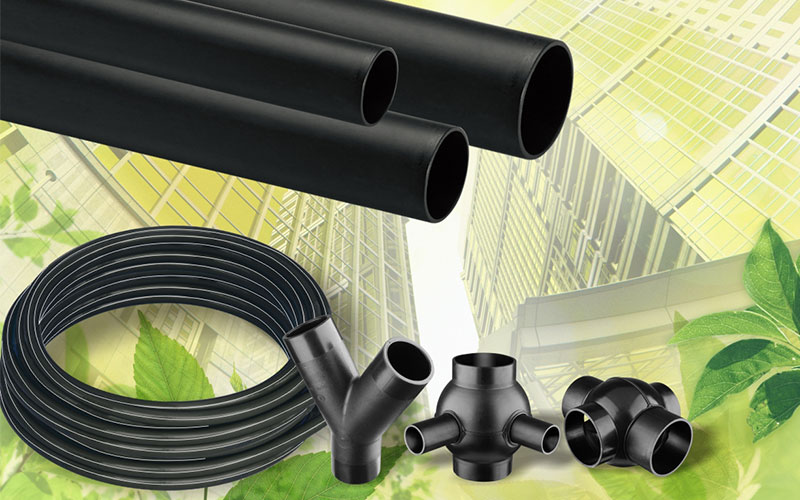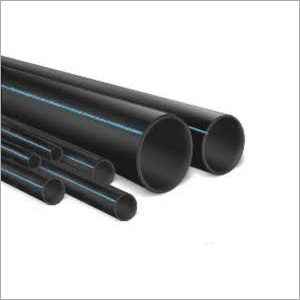Important Factors of custom hdpe pipe manufacturing Midland TX for Specialized Industries
The Necessary Actions for Successful Setup of HDPE Pipe in Your Following Project
Effective setup of HDPE pipe needs cautious planning and execution. Secret actions consist of reviewing task demands, preparing the site, and choosing correct joining strategies. Each phase plays an important role in ensuring the integrity and efficiency of the pipeline. Comprehending these essential actions can substantially affect the total success of the project - Midland TX HDPE Pipe Fittings in Stock. Nonetheless, the subtleties of each action may hold the secret to getting rid of common obstacles encountered during installment
Recognizing the Advantages of HDPE Pipeline
High-density polyethylene (HDPE) pipeline offers countless advantages that make it a favored choice for numerous applications. Its high resistance to rust and chemicals warranties durability in requiring settings, significantly expanding the life expectancy of setups. Furthermore, HDPE's flexibility permits much easier installment, specifically in challenging terrains, as it can bend without damaging. The light-weight nature of HDPE pipeline simplifies transport and handling, minimizing labor prices throughout installation.
HDPE pipe is known for its reduced rubbing coefficient, which improves liquid circulation and reduces energy usage. Its seamless building minimizes the danger of leaks, adding to much better resource administration and environmental management. Furthermore, HDPE is recyclable, lining up with lasting methods and minimizing environmental influence. Overall, the combination of stamina, adaptability, and eco-friendliness makes HDPE pipeline a superior selection for a wide variety of projects, from water circulation to industrial applications.
Planning Your HDPE Pipeline Installment
When preparing an installment of HDPE pipeline, mindful factor to consider of a number of crucial elements is crucial to protect an effective job. First, job supervisors have to analyze the specific requirements of the pipe, including the planned use, flow prices, and environmental conditions. Understanding these specifications will certainly guide the option of appropriate pipeline measurements and product quality.
Next, timelines must be established, factoring in purchase timetables and any prospective delays. Sychronisation with neighborhood authorities for authorizations and governing conformity is also crucial. Furthermore, a thorough budget plan ought to be prepared, including all prices associated with products, labor, and equipment.
It is important to involve a qualified team experienced in HDPE pipe installation. Their expertise will certainly assist alleviate dangers, assurance adherence to market requirements, and ultimately contribute to the task's success. Detailed preparation prepares for a smooth installation process and long-lasting performance of the HDPE piping system.
Preparing the Site for Installation
Correct site preparation is important for the successful installation of HDPE pipe. Before setup starts, the site should be completely analyzed to ensure it satisfies all needed needs. This consists of surveying the ground for existing frameworks, utilities, and prospective risks that can hamper the installation procedure.

Right altitude and placement should be developed to keep a regular slope for drain purposes. Proper drainage around the installment website is additionally imperative to prevent water accumulation, which can bring about issues down the line.
Methods for Joining HDPE Pipelines
Achieving a reputable connection in between HDPE pipelines is vital for guaranteeing the integrity and long life of the setup. Numerous methods exist for signing up with these pipelines, each suited for various job demands. Fusion welding is among one of the most usual methods, using warmth to bond the pipe finishes with each other, creating a smooth and durable connection. This method can be more classified into outlet combination and butt blend, depending upon the pipeline setups.
Mechanical installations are an additional alternative, using clamps and threaded adapters to sign up with sections of HDPE pipe. While usually faster to set up, they might call for added upkeep gradually. Electrofusion is a specialized approach that entails using electric current to heat and fuse the pipelines via specially developed fittings, guaranteeing a solid bond. Choosing the proper signing up with method is important, as it directly impacts the overall performance and reliability of the HDPE piping system in the intended application.
Evaluating and Examination of Installed Pipes
The testing and evaluation of set up HDPE pipelines are critical to ensuring their capability and long life. This process encompasses visual evaluation strategies, stress testing methods, and leak detection treatments to recognize potential problems. By employing these techniques, specialists can confirm the stability of the installment before it is taken into use.
Aesthetic Assessment Techniques
Employing reliable aesthetic examination techniques is crucial for guaranteeing the integrity of installed HDPE pipes. Assessors must methodically take a look at all visible sections of the pipeline to identify any indicators of damages, imbalance, or inappropriate installment. Trick indicators to assess consist of joint integrity, surface abnormalities, and links. Inspectors might make use of tools such as multiplying glasses or cams to improve exposure and detail. It is necessary to look for indications of ecological anxiety, such as twisting or excessive bending, which could endanger efficiency. Consistent paperwork of findings permits tracking adjustments in time and assists overview needed repair services. By sticking to established visual assessment protocols, job teams can notably reduce the danger of future failures and guarantee long-lasting reliability of the piping system.
Stress Testing Methods
Aesthetic examination acts as a preliminary step, yet their website it is not sufficient on its own to guarantee the efficiency of mounted HDPE pipelines. Pressure testing techniques are necessary for making certain the honesty of these systems. Normally, hydrostatic testing is used, where the pipelines are filled with water and subjected to stress levels above the desired operating stress. This method helps recognize weak points or prospective leaks. Pneumatic testing can also be utilized, although it lugs better risks due to the compressibility of air. Despite the technique picked, sticking to industry criteria and security procedures is essential. After performing stress tests, comprehensive paperwork is essential to validate the outcomes and validate that the installment meets all operational requirements before proceeding to the following stage of the project.

Leak Discovery Procedures
How can one ensure that mounted HDPE pipes are without leaks? Reliable leakage discovery treatments are vital to secure the integrity of the system. Initially, aesthetic inspections should be performed, looking for indicators of water buildup or dirt disintegration around pipe joints. Following this, pressure testing can verify the system's stamina. An usual approach is the hydrostatic examination, where water is presented under pressure, keeping track of for declines that suggest potential leakages. In addition, progressed innovations, such as acoustic sensors or infrared thermography, can detect leakages that may not be visible. Routine surveillance and upkeep additional add to the long life of HDPE pipes, ensuring they stay leak-free throughout their operational life-span. Appropriate documentation of these treatments is crucial for compliance and future reference.
Upkeep Tips for Long-Term Performance
To ensure the durability of HDPE pipes, developing a normal evaluation routine is vital. This positive technique enables the early detection of prospective issues, lessening costly repair work. In addition, carrying out proper cleansing techniques will certainly assist maintain peak efficiency and prevent accumulation that can affect functionality.
Regular Evaluation Schedule
HDPE pipes are recognized for their toughness and resistance to deterioration, developing a regular assessment timetable is crucial for ensuring their long-term performance. Routine evaluations aid recognize potential concerns such as leakages, joint stability, and environmental influences that may impact the pipeline's performance. It is recommended that examinations take place at least biannually, or more frequently in settings with extreme conditions. hdpe pipe fittings Midland TX. Throughout these evaluations, visual checks must be carried out to detect signs of wear or damages. Additionally, using innovation such as ultrasonic screening can offer more insights right into the pipe's problem. By applying an organized evaluation routine, job supervisors can proactively attend to troubles, thereby extending the lifespan of HDPE pipelines and preserving system effectiveness
Proper Cleansing Techniques
Appropriate cleaning techniques play an important role in maintaining the lasting efficiency of HDPE pipelines. Routine cleaning prevents the accumulation of particles, sediment, and biofilm, which can cause clogs and decreased circulation performance. Operators must utilize techniques such as high-pressure water jetting or foam cleansing to efficiently eliminate impurities without damaging the pipe surface area. It is essential to stay clear of utilizing severe chemicals that may deteriorate HDPE material. Furthermore, set up upkeep checks ought to consist of aesthetic assessments for any type of indications of wear or damage. Correctly trained workers ought to perform these Read Full Article cleaning processes, guaranteeing conformity with safety and security pex pipe clamps and ecological guidelines. By applying these techniques, the life-span of HDPE pipelines can be significantly prolonged, making sure suitable efficiency throughout their functional life.
Regularly Asked Inquiries
What Are the Environmental Effects of HDPE Pipeline Manufacturing?
The ecological impacts of HDPE pipe production consist of greenhouse gas exhausts, energy usage throughout production, possible plastic contamination, and challenges in recycling. HDPE's durability and resistance to corrosion can minimize some environmental concerns.
Exactly How Does HDPE Pipeline Compare to Various Other Products?

What Devices Are Required for HDPE Pipeline Installation?
Crucial tools for HDPE pipeline installation consist of a fusion maker, pipeline cutters, shovels, measuring tape, and safety and security equipment. Proper devices guarantees efficient, risk-free handling and setup, adding to the project's general success and honesty.
Exist Any Certain Rules for HDPE Pipeline Installation?
Particular guidelines for HDPE pipeline installation differ by area, typically controlled by local, state, or government codes. Conformity with these guidelines warranties security, environmental management, and capability, making adherence vital for successful job outcomes.
Can HDPE Pipeline Be Recycled After Use?
Yes, HDPE pipelines can be recycled after use. Their polycarbonate nature enables reprocessing, making them appropriate for recycling right into new products. This sustainability aspect adds to environmental conservation and advertises circular economic climate techniques in construction.